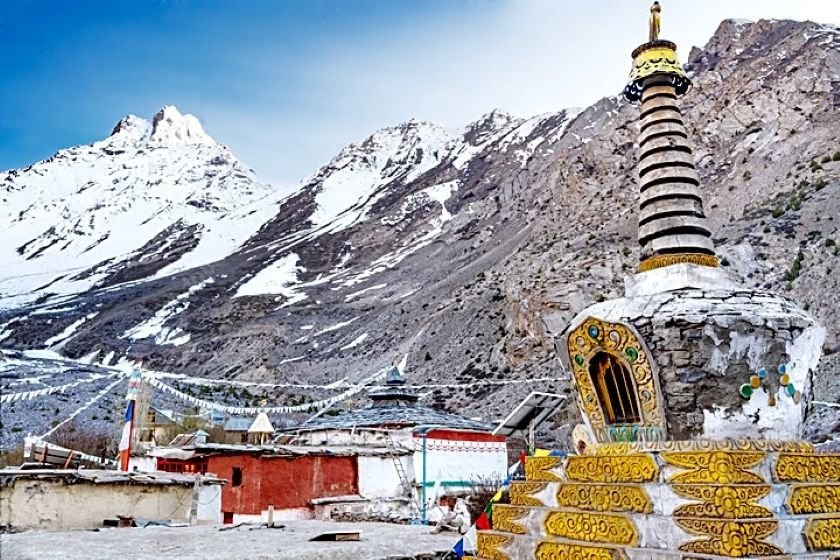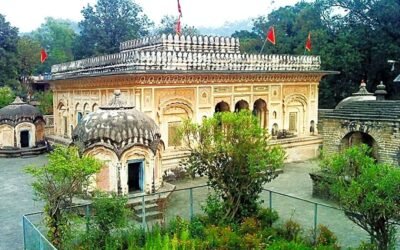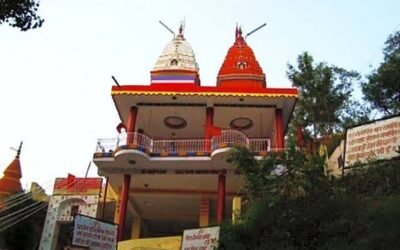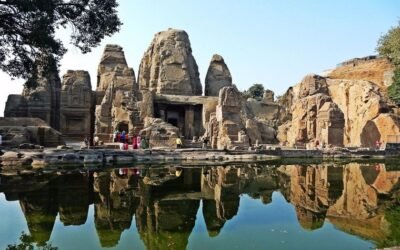Where Avalokiteshvara watches in silence, and the wind carries the wisdom of centuries
Tucked deep in the Charang Valley, near the Indo-Tibetan border, the Rangrik Tungma Temple—also known as the Charang Monastery—is one of the oldest and holiest Buddhist temples in Kinnaur. Revered as a spiritual anchor of the Kinnaur Kailash Parikrama, this 11th-century sanctuary is a rare blend of Tibetan Buddhist devotion and Himalayan mysticism, where prayer wheels spin with the rhythm of the wind and murals whisper ancient truths.
🌄 Location & Accessibility
- Location: Charang Village, near Moorang, Kinnaur District, Himachal Pradesh – 172109
- Altitude: ~3,400 meters
- By Road: 16 km from Moorang, 60 km from Reckong Peo; accessible by narrow mountain roads
- By Air: Shimla Airport (~270 km)
- By Rail: Shimla (~244 km); further travel by road
- On Foot: A 2 km walk from Charang village through barley fields and rocky trails
🕉️ Deity & Worship
The temple is dedicated to Avalokiteshvara (Chenrezig), the Bodhisattva of Compassion, whose presence is believed to bless the valley with peace, protection, and spiritual clarity. The sanctum houses ancient thangka paintings, Buddhist scriptures, and ritual objects used in tantric ceremonies.
The goddess is worshipped in the form of three pindis, representing Maha Kali, Maha Lakshmi, and Maha Saraswati.
Devotees offer red flags, coconuts, and sweets, and the temple is especially known for fulfilling wishes of childless couples and those seeking justice. Monks and nuns perform daily prayers, butter lamp offerings, and recitations of the Avalokiteshvara mantra—Om Mani Padme Hum. The temple is also a spiritual checkpoint for pilgrims undertaking the Kinnaur Kailash Parikrama.
🏛️ Architecture & Setting
The Rangrik Tungma Temple is a multi-storeyed structure made of mud, stone, and cedar wood, with:
- Intricately painted walls depicting scenes from the life of Buddha and Tibetan legends
- A chorten (stupa) within the temple courtyard
- A monastic college, meditation hall, and prayer wheels lining the outer walls
- A collection of bone and ivory ritual objects, traditionally viewed only by men
The temple sits on a high plateau, offering panoramic views of the Kinnaur Himalayas, with the Tidong stream flowing below and Buddhist flags fluttering in the alpine breeze.
📜 Mythological Significance
The temple is believed to have been established in the 11th century, making it one of the oldest surviving Buddhist sites in Himachal Pradesh. According to local lore, Rangrik Tungma was once a center of Buddhist learning, and its location was chosen by divine guidance. The temple is considered so sacred that the Kinnaur Kailash Parikrama is deemed incomplete without receiving blessings here.
The name “Rangrik” refers to self-manifested divinity, and “Tungma” is believed to signify a sacred peak or protector—together symbolizing the living presence of Avalokiteshvara in the mountains.
🎉 Festivals & Celebrations
- Buddha Purnima: Celebrated with chanting, butter lamp offerings, and community feasts
- Losar (Tibetan New Year): Marked by masked dances, prayer ceremonies, and ritual purification
- Daily Worship: Includes morning and evening chants, incense offerings, and turning of prayer wheels
🏞️ Nearby Attractions
- Charang Village: A traditional Kinnauri hamlet with slate-roofed homes and barley fields
- Charang La Pass: A high-altitude gateway on the Kinnaur Kailash Parikrama route
- Moorang Fort: A historic site linked to the Pandavas and local legends
- Ropa Valley & Tidong River Trails: Ideal for trekking and spiritual solitude
🙏 Spiritual Experience
The Rangrik Tungma Temple is not just a monastery—it is a mountain prayer etched in stone, a place where compassion takes form in silence and snow. As you step into its ancient halls, with the scent of butter lamps and barley incense, you feel the presence of Avalokiteshvara in every carved beam and painted wall. It is a temple where the Himalayas bow to the Bodhisattva, and the **soul finds its still point in the turning of a prayer wheel.




